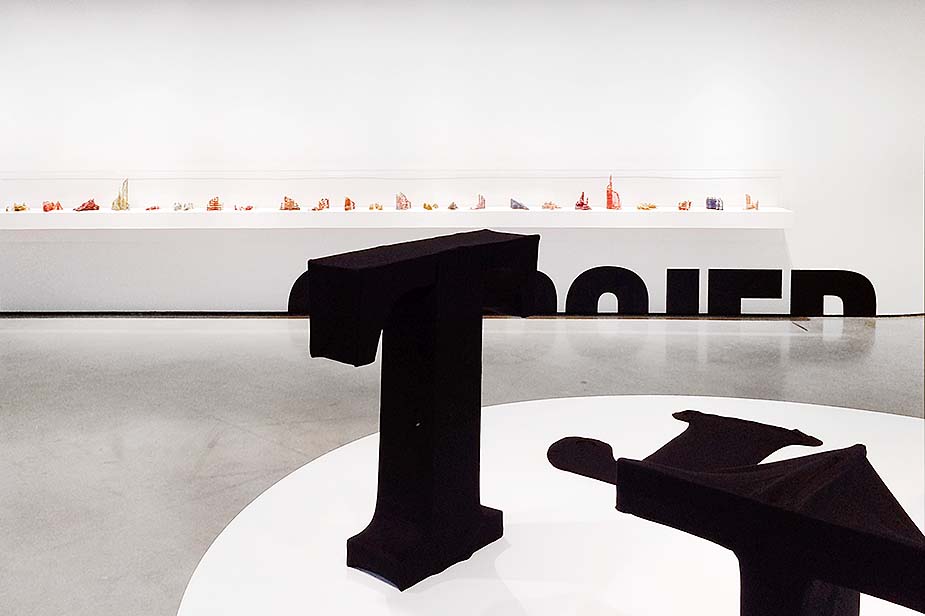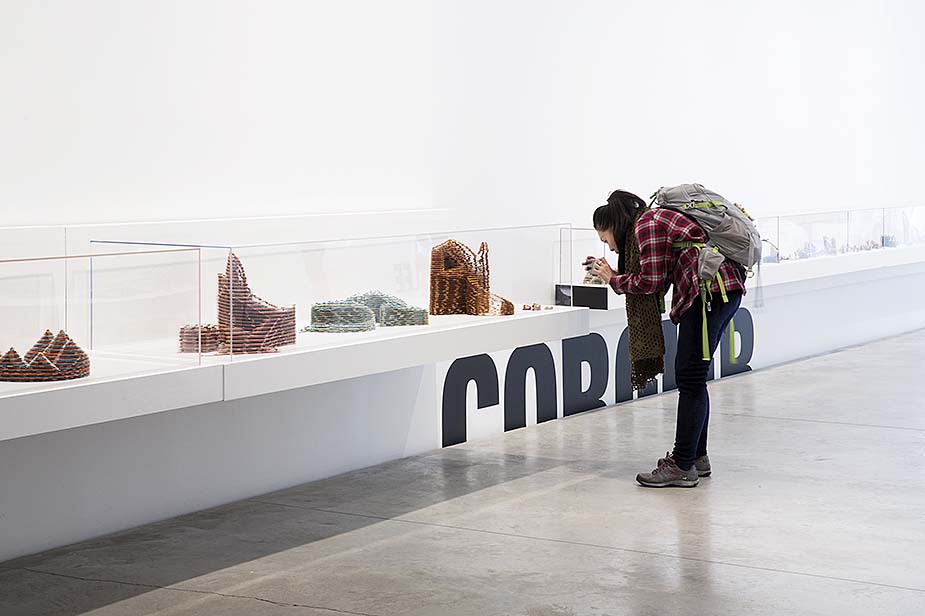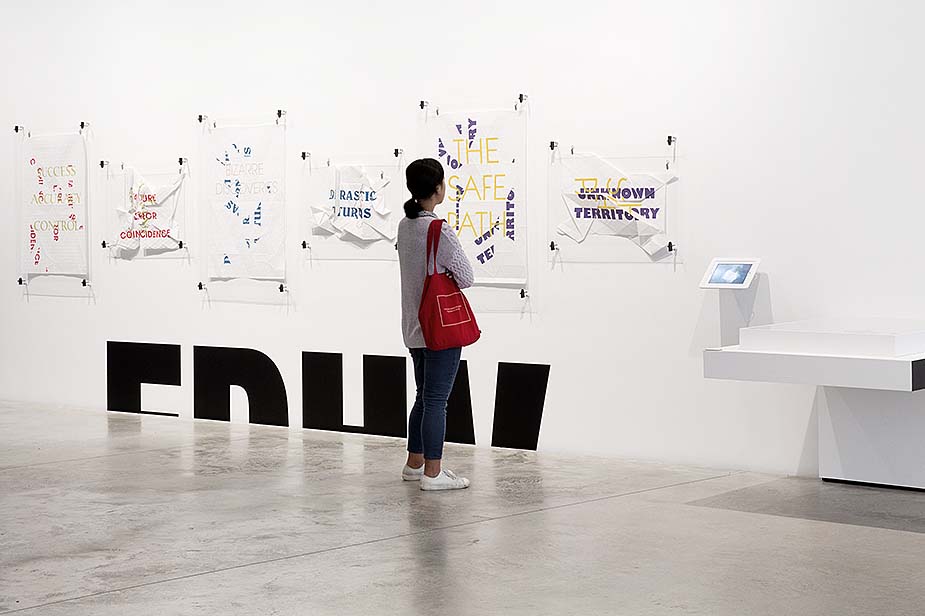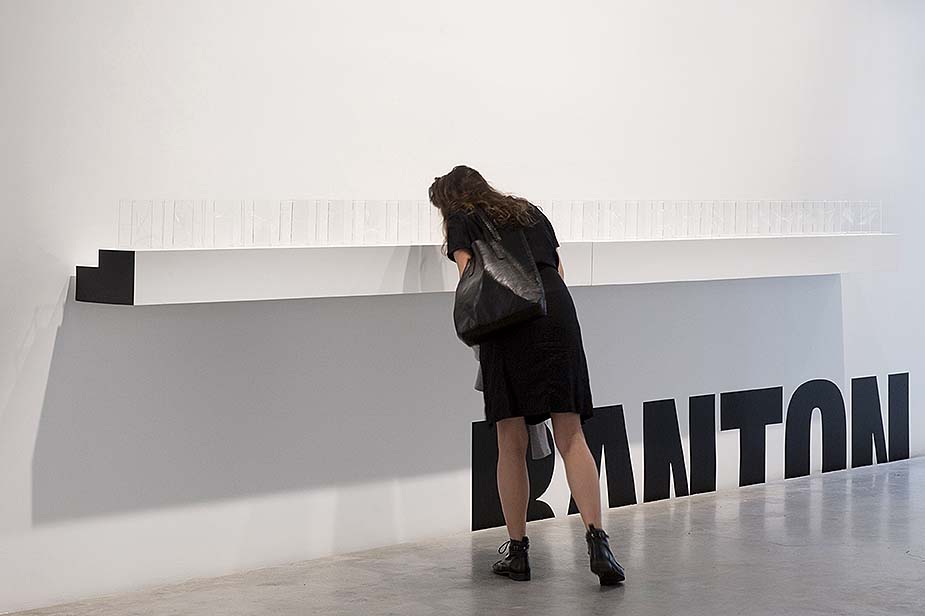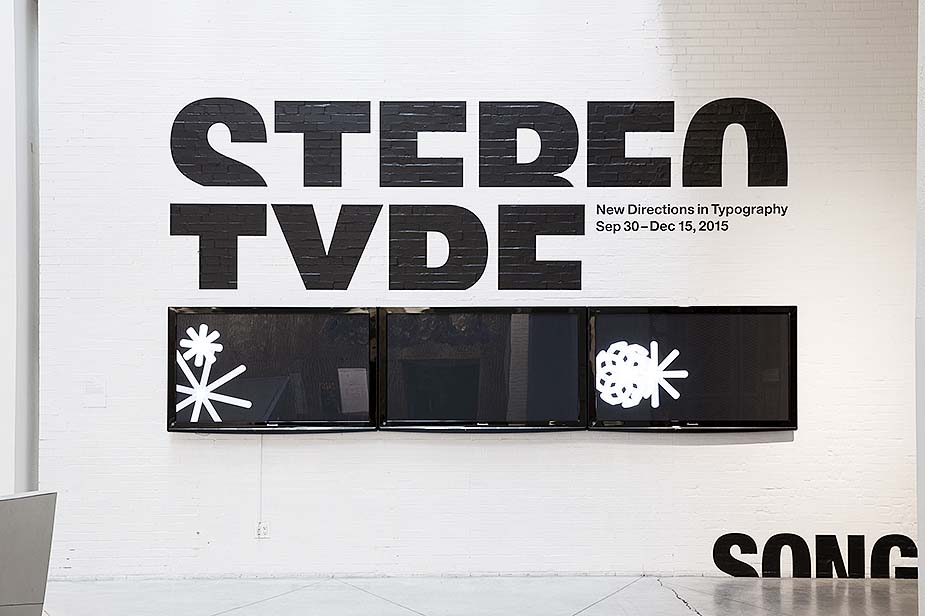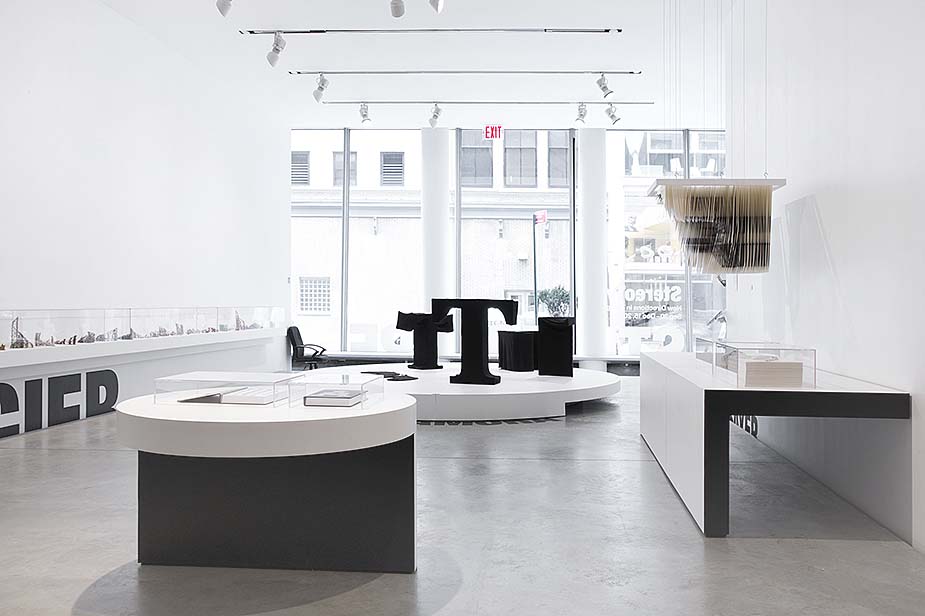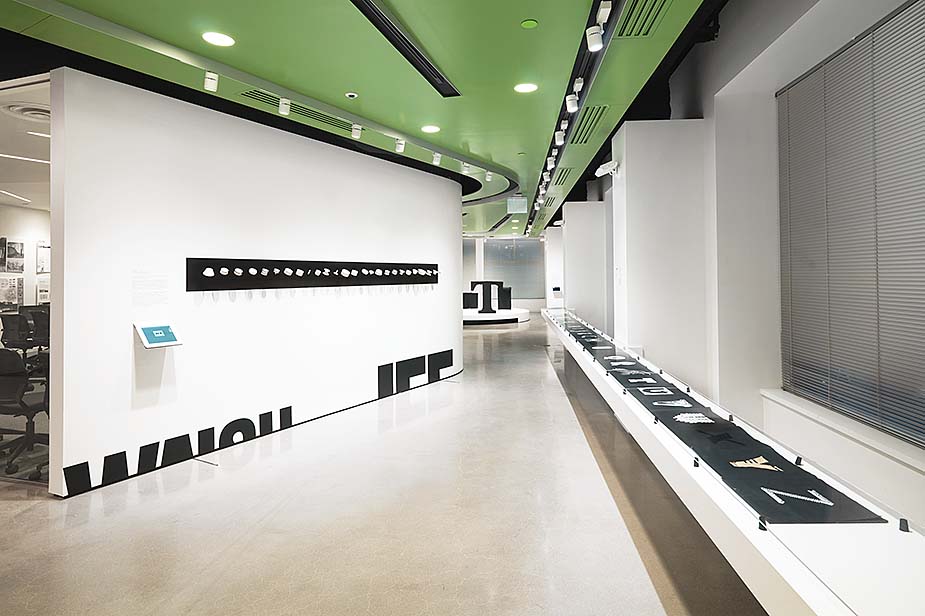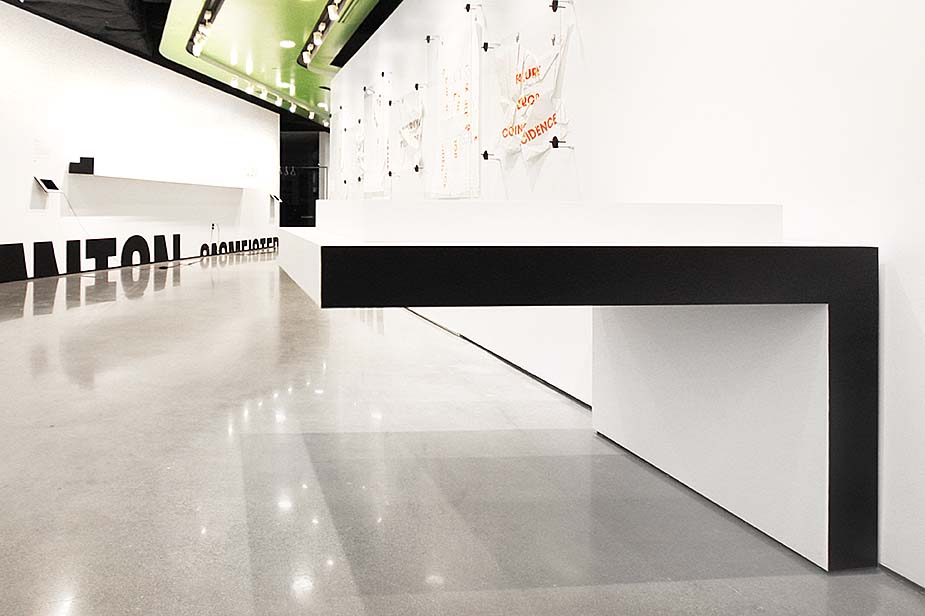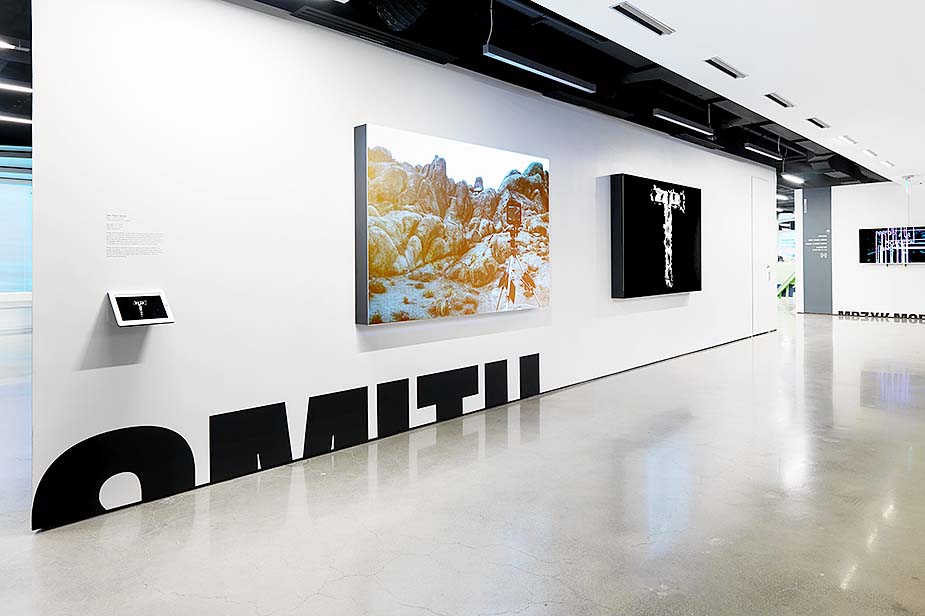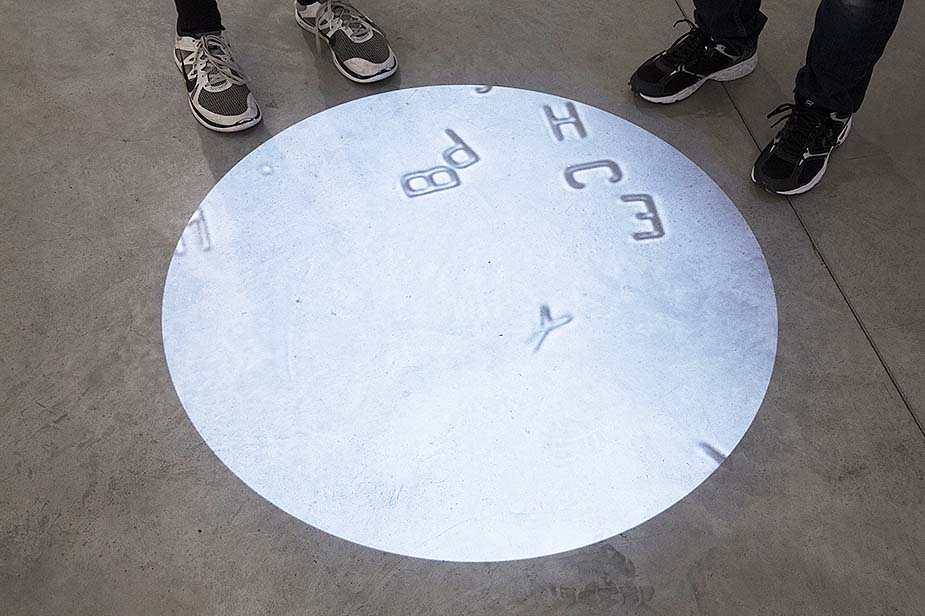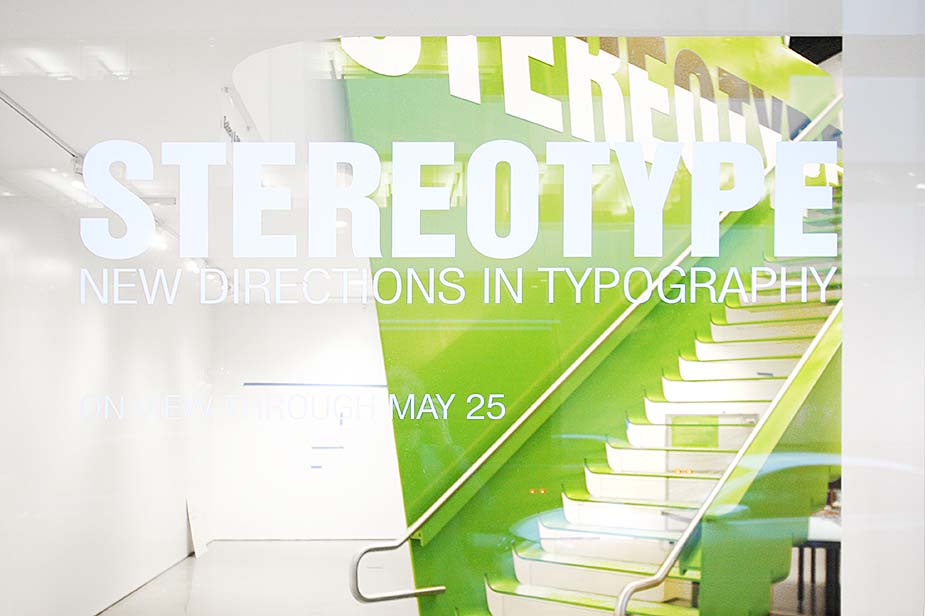STEREOTYPE
Boston Society of Architects, Multiple Venues
Proposal 2013Project 2014
Completion 2014
Stereotype: New Directions in Typography presents work from a group of designers pushing perceptions about type to accommodate the digital and experiential through pioneering explorations in motion typography. The exhibition opened at the Boston Society of Architects in 2014, and traveled to the Selby Gallery, Parsons School of Design, and the Richard Peeler Art Center in 2016. Its planned lack of a consistent physical situation and curatorial divisions suggested to us a means of display with a presence robust enough to unify the body of work as a whole even in diverse contexts.
We created graphics to bind the show to its changing gallery circumstance, using designer names to mark their territories, and designed an alphabet of chunky graphic displays to accommodate the works. Working with the BSA and Curator Squared, RL used duplicate works, digital displays, and minimal framing to allow the most direct, unmediated experience of the work possible. Preceded by important exhibitions from a stance within the field, StereoType takes an approach in which conceptual and performance art and even science are the progenitors of ways to re-think typography in a digital age.
Rice+Lipka Architects
Principals: Lyn Rice & Astrid Lipka
Lead Designer: Taylor McNally-Anderson
Project Team: Alexander Crean
Curators: C2/Ginger Gregg Duggan & Judith Hoos Fox
